A Love. A War. A Citizen.
"What drives people to join the military? Patriotism? Poverty? Fear? Honor? Glory? Citizenship? The draft? Love?
"The reasons are many and, in many cases, more than one reason applies.
"This is the true story of Marguerite Martin and Felix Lovera, two young lovers who served in the United States Army in France during World War I."
So begins Patrick Lundquist's remarkable story of two immigrant Americans whose love survived World War I, and whose marriage, paradoxically, was made possible by the war. Click here to read the just-made-for-Valentine's Day story of Felix, a Sergeant in Bakery Company 324, and Marguerite, one of the Army's "Hello Girls" in France, and the ultimate victory of their love against all odds.
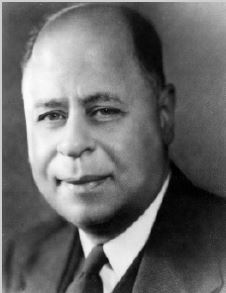
Dr. Frank Erdman Boston (1890-1960), WWI Veteran, Doctor, Surgeon, First Responder, graduate of Fort Des Moines, who served in France with the 92nd Division (Buffalo soldiers) and returned to accomplish incredible feats, will be the subject of a live presentation at the Fort Des Moines Museum. Click here to learn more about the presentation, and how to attend. After his WWI service, Major Frank Boston, came home to be an inspiring leader in other ways. Click here to read more, and learn how in addition to being the first African American to start both a hospital and an ambulance service, he may also be the pioneer of modern emergency medical services as we know them today.
|
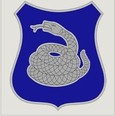
The 369th Infantry, whose members called themselves Harlem’s Rattlers, became the most famous all-black regiment to fight during World War I. By the end of the war, 171 of the regiment’s men received individual Croix de Guerre medals for their valor. It was a New York Army National Guard infantry unit and one of the first few U.S. Army regiments to have African American officers in addition to an all-African American enlisted corps. Click here to read more about this storied unit, one of a few black American combat units during World War I.
|
How Valiant Hearts: Coming Home Honors the Harlem Hellfighters
Put that thing down and back slowly away: how WWI can become uncomfortably close...
A Family Tie To U.S. Navy's Cyclops Led To Three Books About The WWI Mystery Ship
How World War I Changed How And What Americans Eat At Mealtimes
|
During the week of January 16, 2023, Daily Taps at the National World War I Memorial in Washington, DC was sounded in honor of WWI veteran William Matthews, namesake for Washington VFW post 1585.
When the U.S. entered WWI, William could have received a deferral due to his work on the family farm. Matthews chose to support his country & enlisted in the Army Dec. 10th, 1917. He became a member of Co. F, 6th Battalion (Forestry) 20th Engineers & sailed for France Jan. 24th, 1918 aboard the SS Tuscania. On Feb. 5th, the Tuscania was struck by a torpedo from a German submarine & sank in the Irish Sea. Approx. 210 soldiers were lost, including Matthews.
|
|
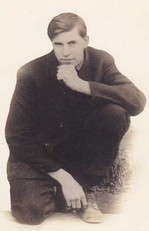 |
The Daily Taps program of the Doughboy Foundation provides a unique opportunity to dedicate a livestreamed sounding of Taps in honor of a special person of your choice while supporting the important work of the Doughboy Foundation. Choose a day, or even establish this honor in perpetuity. Click here for more information on how to honor a loved veteran with the sounding of Taps.
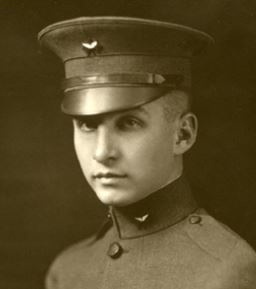
A man is only missing if he is forgotten.
Our Doughboy MIA this month is First Lieutenant Philip Edward Hassinger of the 22nd Aero Squadron. “Phil”, as his friends called him, was born on 1 Nov 1893 in New York City, New York to Dr. Jacob “Joseph” P. Hassinger DDS and Mellie Karns Hassinger. He was the eldest child of three to first generation American parents. Phil Hassinger attended New York City’s Morris High School and, like his father, attended Columbia University in New York. Philip Hassinger was prominent in school activities as President of The Columbia Players, a theater club, and Manager for Columbia’s Varsity Hockey Team. He was a member of Theta Psi fraternity and after graduating in 1914 he was elected the permanent Secretary for the Class of 1914 alumni.
Obtaining a bachelor’s degree in advertising, Philip Hassinger began working in the Kerr Steamship Company Advertising Department until the Mexican Border Crisis in 1916, when he enlisted as a Private in the 1st Motorized Battery of the New York National Guard. The battery was never mobilized into active service and in June Hassinger was released from duty and returned to his job.
But the crisis in Europe would lead him away again for military service. In 1917 Hassinger attended the Officer Training Course at Plattsburg, New York and while there was accepted into the Army Signal Corps Aviation Service and sent to Ground School for Aviators at the Massachusetts Institute of Technology from 14 August 1917 to 1 October 1917. Hassinger then went on to complete basic flight school at Mineola, New York, graduating on 26 December 1917. On 12 January 1918 he was commissioned as a First Lieutenant in the United States Army as a Reserve Aviator.
Less than three weeks later Hassinger departed for Europe on 31 January 1918 as part of the 185th Aero Squadron. After two weeks crossing the Atlantic, Hassinger arrived in France and was sent for Advanced Flight and Gunnery training before being assigned to the newly formed 22nd Pursuit Squadron as a fighter pilot flying the French built SPAD XIII on 27 August 1918. He flew his first combat mission on 2 September 1918.
|
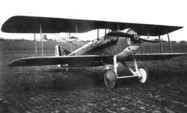
The 22nd Aero Squadron would fly patrols during the St. Mihiel Offensive between 12 September 1918 and 15 September 1918. On 14 September, at 2:18 pm the 22nd’s commander, Captain Ray C. Bridgeman, led a patrol of nine aircraft on a high protection mission to cover two Salmson 2A2 aircraft performing photographic reconnaissance. While on patrol the nine unsuspecting SPADs were jumped by twelve enemy Fokker DVIIs, which broke up the formation. It would prove to be First Lieutenant Phil Hassinger’s final mission.
“Lt. Hassinger failed to return” is simply how Captain Bridgeman ended his combat report after he returned to Toul. The squadron history, written by First Lieutenant Arthur Raymond Brooks, one of the nine aviators in combat that day, would state “Lieut. Hassinger disappeared entirely from the fight at its beginning, and it is practically certain that he fought a glorious fight against large odds.” But the details of Hassinger’s final fate were a mystery.
Searchers looking into Hassinger's case after the war had to wade through plenty of misinformation. Early in 1919 the International Red Cross stated that Lieutenant Hassinger was seen alive as a prisoner of war, which turned out to be erroneous. It was then determined that Hassinger’s aircraft exploded in the air over a large lake near Lachaussee, which is east of Mars-la-Tour. However, searchers could not find anyone that could confirm it was Lieutenant Hassinger’s aircraft.
|
A report from the Chaplain of the 103rd Engineers stated he buried an aviator’s body near that area later in the war, but these remains turned out to be of a pilot from the 95th Aero Squadron.
German records indicated Lieutenant Hassinger was shot down by Leutnant Hantelmann of Jasta 15 over St Benoit-en-Woevre. This could not be the correct location however as the town was in the American Army’s control the morning of 13 September 1918. However, Leutnant Hantelmann was also given credit for shooting down a SPAD near Lachaussee. Leutnant Hantelmann later recalled that he had seen the SPAD he was chasing explode in the air and fall in pieces to the ground between Mars La Tour and Lachausssee. At the time German ace thought the aircraft was hit by an artillery shell. This information agrees with some of the American pilots on the mission that day. Lieutenant Hassinger was the only member of the patrol to not return that day.

Hassinger’s fate would become further muddled when, after the war, his family would receive a notice that their son was found and buried in an American Cemetery at Fere-en-Tardenois, France. But these remains were found over 130 miles away from where Hassinger was flying. The family identified this problem to the War Department and the information found its way to air service searchers who, along with Hassinger’s brother, dug up the grave and discovered the remains were that of a Private in D Battery, 16th Field Artillery. Incredibly this soldier’s name was Phillip F. Hassinger as well, and he was from a family known to Lieutenant Hassinger’s parents! The mystery of Lieutenant Hassinger’s fate would continue to confound investigators until 1934 when the U.S. Government announced they ceased search operations for America’s MIA’s.
|
Sadly, in November of 1934 Lieutenant Hassinger’s brother received a letter from a German soldier stating he was present on the ground when Lieutenant Hassinger fell to earth. This man stated he had seen his brother’s aircraft shot down by artillery fire after observing the SPAD coming from the direction of Mars-la-Tour at a high altitude when fired upon. “Suddenly one part of a wing came loose, and the plane came down after several complete turns,” he wrote. He speculated that just after his plane was hit, Hassinger “jumped or fell from the machine.” Rushing to the scene, the aircraft wreckage was on fire and the body of Lieutenant Hassinger lay 80 meters away. Hassinger was “killed instantly upon hitting the ground.” The soldier said he knew it was Hassinger as he had seen the lieutenant’s identity papers and he had kept his belt as a souvenir.
Unfortunately, the soldier could not provide information as to where Lieutenant Hassinger’s body was buried. He stated in the letter, “a superior officer unknown to me joined us, took the wallet, identification paper, etc., and ordered some soldiers to take the body along.” Then the group came under artillery fire and dispersed. In his letter he drew a map of where it all had happened, but investigators found no grave nearby.
Doughboy MIA has an Aviation Team dedicated to locating missing in action American Aviators of World War One. First Lieutenant Hassinger’s MIA case is actively being researched by this team with the goal of finding and repatriating his remains if possible.
Want to help? Go to www.doughboymia.org and make a donation today! YOU can be part of the recovery efforts!
Merchandise From The Official
Doughboy Foundation WWI Store
 Lest We Forget: The Great War World War I Prints from the Pritzker Military Museum & Library. One of the nation’s premier military history institutions pays tribute to the Americans who served and the allies they fought beside to defeat a resourceful enemy with a lavishly illustrated book. It is an official product of the United States World War One Centennial Commission and is a tribute to those who served in the Army, Navy, Marine Corps, and what would become the Air Force. It serves as a lasting reminder that our world ignores the history of World War I (and the ensuing WWII) at its peril―lest we forget.
Honoring the Doughboys: Following My Grandfather's World War I Diary is a stunning presentation of contemporary photographs taken by the author that are paired with diary entries written by his grandfather, George A. Carlson, who was a soldier in the U.S. Army during World War I. Jeff Lowdermilk followed his grandfather's path through France, Belgium, Luxembourg, and Germany and returned with these meticulously crafted photographs and his own engaging stories that bring the diary to life for contemporary readers. Lowdermilk's passion for World War I and military history began as a young boy when he listened to his grandfather tell his stories about serving as an infantryman-- a "Doughboy"--in Europe during the Great War.
This and many other items are available as Official Merchandise of the Doughboy Foundation.
|